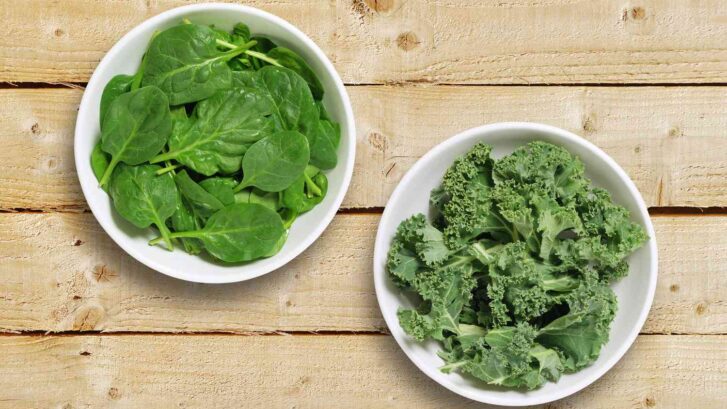Spinach vs. Kale: Nutritionists Settle the Great Debate
When it comes to powerhouse greens, spinach, and kale are the heavyweights of the vegetable world. Both are lauded for their extensive nutritional profiles and health benefits, which has led to a great debate: between spinach and kale, which is truly ‘better’ for you? Our concierge doctors in Jupiter dive into what nutritionists have to say.
Nutritional Profiles
Kale:
Kale is often dubbed as a superfood, and for good reason. It’s packed with vitamins A, K, C, and B6, as well as minerals like calcium, potassium, magnesium, and manganese. It also contains antioxidants such as quercetin and kaempferol.
Spinach:
Spinach is another nutrient-dense leafy green. It’s rich in vitamins A, C, K1, as well as several B vitamins. It also offers a good amount of iron, calcium, potassium, and magnesium. Additionally, spinach is known for its high levels of folate and carotenoids like lutein and zeaxanthin.
Health Benefits
Both greens offer a slew of health benefits, including but not limited to:
Anti-inflammatory properties: The antioxidants present in both kale and spinach can help reduce inflammation in the body.
- Heart health: The fiber, potassium, and vitamin content in both may support heart health.
- Bone health: High levels of vitamin K are essential for bone health, which both of these greens provide in spades.
- Eye health: Carotenoids found in both may reduce the risk of macular degeneration and cataracts.
- Cancer prevention: The compounds found in both kale and spinach have been associated with a decreased risk of certain cancers.
The Great Debate: Which is Better?
The term “better” is subjective and can depend on individual nutritional needs and taste preferences. Here’s what nutritionists consider when settling this debate:
Caloric Content
If you’re looking for fewer calories, spinach is slightly lower in calories than kale. However, the difference is minimal.
Iron and Calcium
Spinach offers more iron per serving, which can be crucial for individuals with iron-deficiency anemia. However, the type of iron in spinach is non-heme iron, which is not absorbed as well as the iron found in animal products. Kale offers more calcium per serving, which is beneficial for bone health, particularly for those who do not consume dairy.
Vitamin K
Kale has a significantly higher amount of vitamin K than spinach. This is beneficial for blood clotting and bone metabolism. However, for individuals taking blood thinners, this may require consideration and consultation with a healthcare provider.
Oxalates
Spinach is high in oxalates, which can contribute to kidney stones in susceptible individuals. If you’re at risk for kidney stones, kale might be the better option.
Flavor and Culinary Uses
From a culinary standpoint, spinach has a milder flavor and can be easily incorporated into smoothies, salads, and dishes without overpowering other flavors. Kale’s robust texture and slightly bitter taste might be less versatile for some palates and recipes.
Accessibility and Sustainability
Spinach tends to be more widely available in various forms – fresh, frozen, canned – and can be easier to prepare, while kale can sometimes be harder to find in certain regions and seasons.
The Verdict
Nutritionists lean away from declaring an absolute winner. Both spinach and kale are champions in their own right, and incorporating a variety of greens into your diet is the best way to ensure a wide range of nutrients. It’s not about which one is better, but rather how each can best serve your individual health needs and culinary preferences.
In conclusion, spinach and kale are both nutritious and beneficial to include in your diet. Instead of choosing one over the other, you might consider rotating them in your meals to reap the diverse benefits each has to offer. And as always, when making significant changes to your diet, it’s best to consult with a healthcare provider or a registered dietitian, particularly if you have underlying health conditions.
Remember, when it comes to nutrition, variety is key – there’s plenty of room on your plate for both of these leafy greens. So, why not enjoy the best of both worlds?

